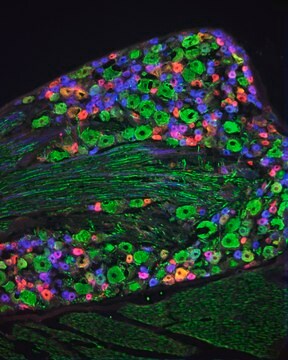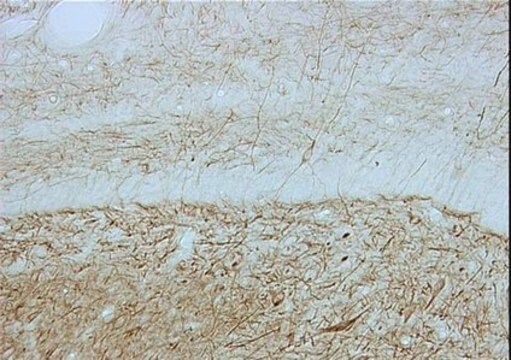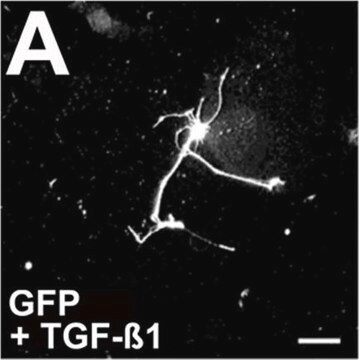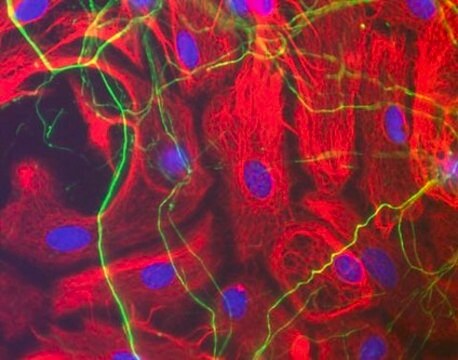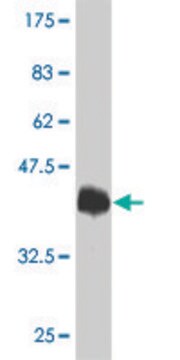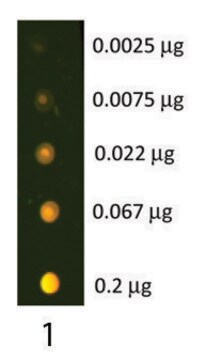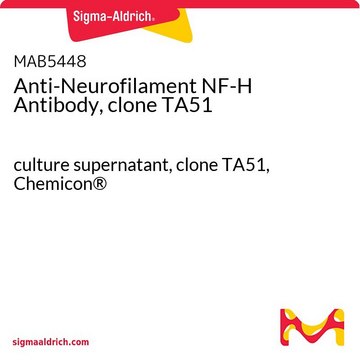Kluczowe dokumenty
SAB4200705
Anti-Neurofilament H (200 kDa) Antibody
monoclonal, N52
Synonim(y):
Anty-CMT2CC, Anty-NFH
About This Item
Polecane produkty
Nazwa produktu
Przeciwciało anty-Neurofilament200 (Phos i Non-Phos), mysie monoklonalne, clone N52, purified from hybridoma cell culture
forma przeciwciała
purified from hybridoma cell culture
Poziom jakości
rodzaj przeciwciała
primary antibodies
klon
N52, monoclonal
masa cząsteczkowa
~200 kDa
reaktywność gatunkowa
mouse, pig, feline, rat, monkey, bovine, human
stężenie
~1.0 mg/mL
metody
immunoblotting: 2.5-5 μg/mL using human neuroblastoma SH-SY5Y cell line fresh lysate
immunofluorescence: suitable
immunohistochemistry: 10 μg/mL using heat-retrieved formalin-fixed, paraffin-embedded human Cerebellum sections
izotyp
IgG1
numer dostępu UniProt
Warunki transportu
dry ice
temp. przechowywania
−20°C
docelowa modyfikacja potranslacyjna
unmodified
informacje o genach
pig ... NEFH(100156492)
Opis ogólny
Specyficzność
Zastosowanie
- immunoblottingu
- immunofluorescencji
- immunohistochemia
Działania biochem./fizjol.
Postać fizyczna
Przechowywanie i stabilność
Oświadczenie o zrzeczeniu się odpowiedzialności
Nie możesz znaleźć właściwego produktu?
Wypróbuj nasz Narzędzie selektora produktów.
Kod klasy składowania
10 - Combustible liquids
Temperatura zapłonu (°F)
Not applicable
Temperatura zapłonu (°C)
Not applicable
Wybierz jedną z najnowszych wersji:
Certyfikaty analizy (CoA)
Nie widzisz odpowiedniej wersji?
Jeśli potrzebujesz konkretnej wersji, możesz wyszukać konkretny certyfikat według numeru partii lub serii.
Masz już ten produkt?
Dokumenty związane z niedawno zakupionymi produktami zostały zamieszczone w Bibliotece dokumentów.
Global Trade Item Number
| SKU | GTIN |
|---|---|
| SAB4200705-100UL | 4061837726170 |
Nasz zespół naukowców ma doświadczenie we wszystkich obszarach badań, w tym w naukach przyrodniczych, materiałoznawstwie, syntezie chemicznej, chromatografii, analityce i wielu innych dziedzinach.
Skontaktuj się z zespołem ds. pomocy technicznej
